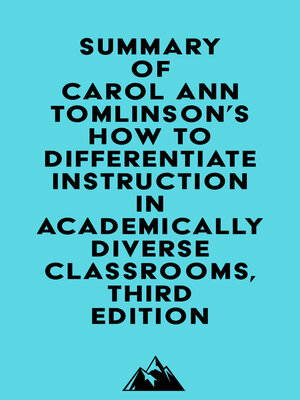Summary of Carol Ann Tomlinson's How to Differentiate Instruction in Academically Diverse Classrooms
ebook
By Everest Media

Sign up to save your library
With an OverDrive account, you can save your favorite libraries for at-a-glance information about availability. Find out more about OverDrive accounts.
Find this title in Libby, the library reading app by OverDrive.



Search for a digital library with this title
Title found at these libraries:
| Loading... |
Please note: This is a companion version & not the original book. Sample Book Insights: #1 Differentiating instruction means shaking up what goes on in the classroom so that students have multiple options for absorbing information, making sense of ideas, and expressing what they've learned. In other words, a differentiated classroom provides different avenues for acquiring content, processing or making sense of ideas, and developing products. #2 While differentiated instruction can offer multiple avenues to learning, it does not assume a separate assignment for each learner. It focuses on meaningful learning, and it ensures that all students engage with powerful ideas. #3 The teacher should be able to control student behavior, and differentiate instruction requires more leadership from the teacher. While teachers who differentiate instruction may have to be more active leaders, they are not doing so at the expense of student thinking. #4 The hallmark of an effective differentiated classroom is the use of flexible grouping, which allows students to work with a variety of peers and with tasks that are thoughtfully designed to draw on their strengths as well as address their weaknesses.






